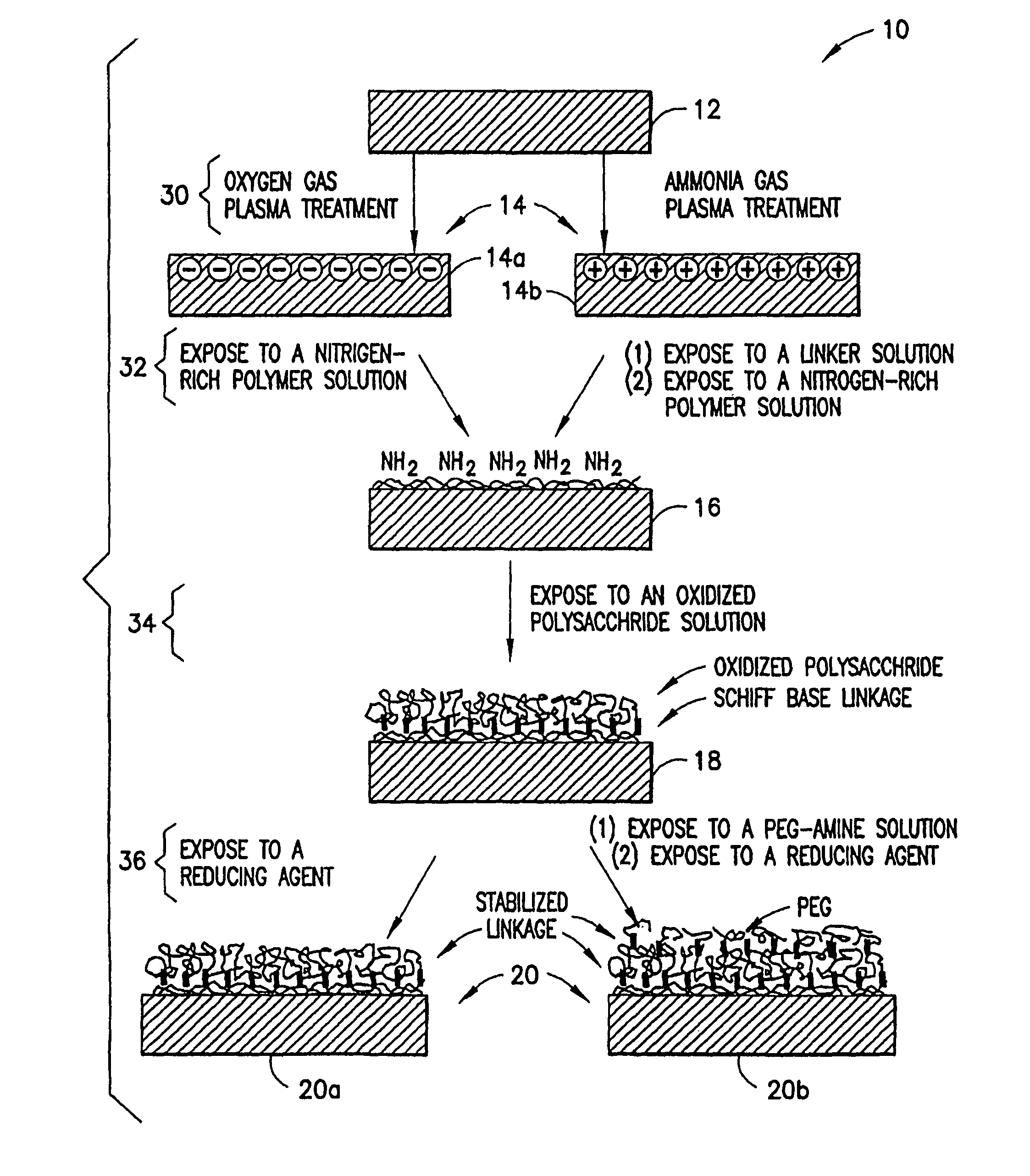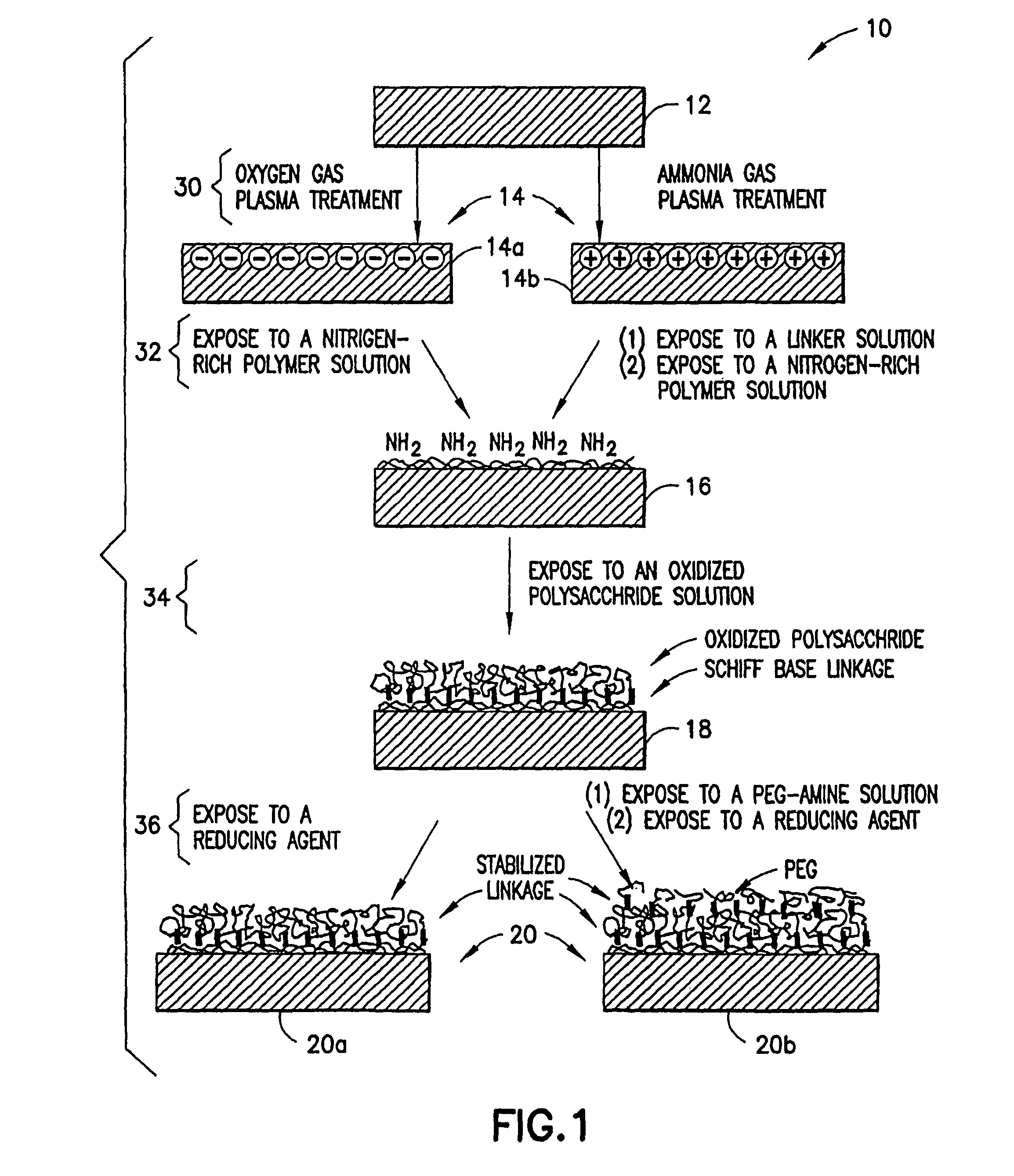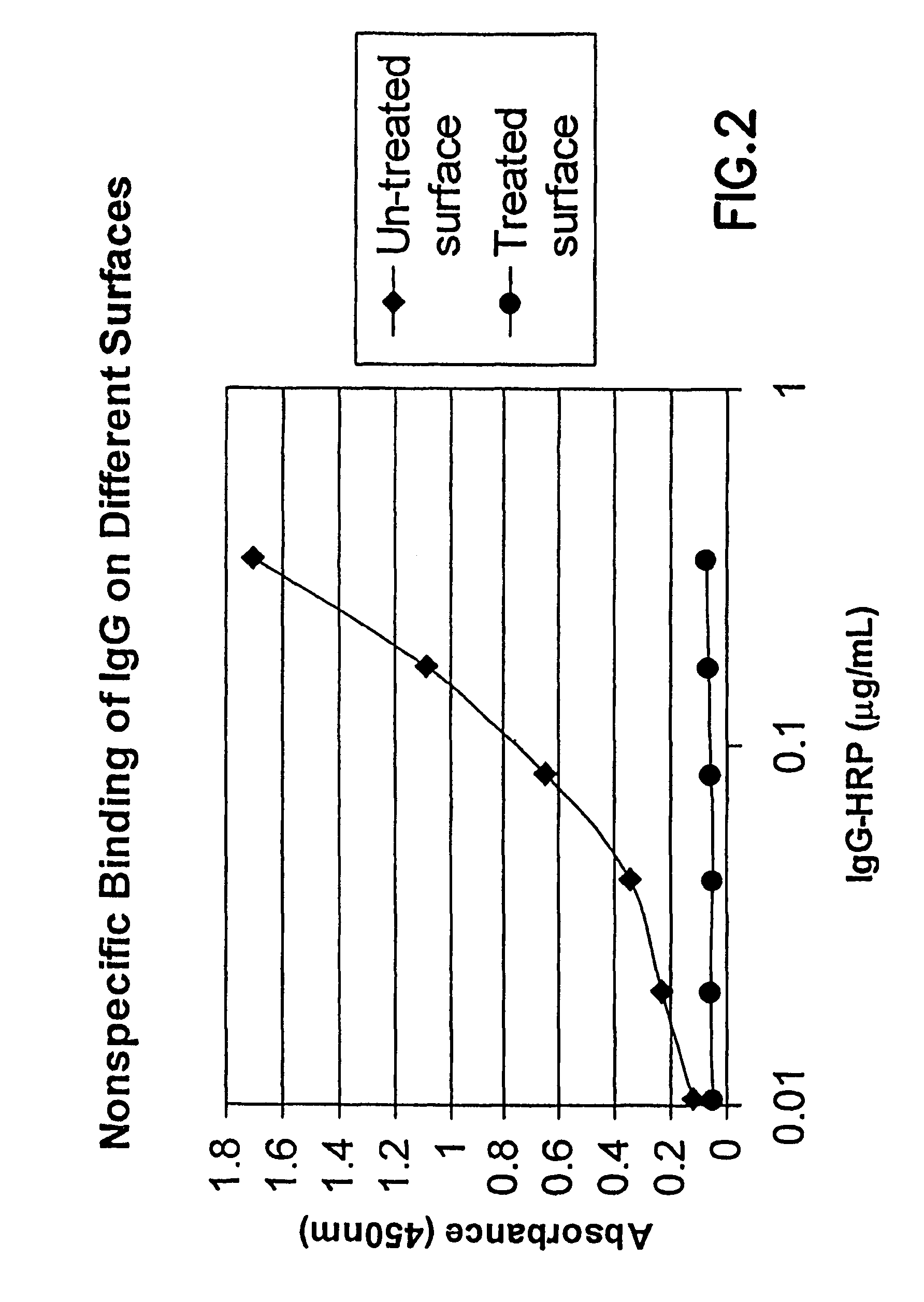Methods for producing surfaces that resist non-specific protein binding and cell attachment
- Summary
- Abstract
- Description
- Claims
- Application Information
AI Technical Summary
Benefits of technology
Problems solved by technology
Method used
Image
Examples
example a
[0030]A polystyrene surface is exposed to oxygen gas plasma treatment, creating a negatively charged surface. The negatively charged surface is exposed to a solution of 1% polyethylenimine for 2 hours. The polyethylenimine coated surface is exposed to a solution of 10 mg / mL oxidized dextran for two hours. The dextran coated surface is exposed to a solution of amine-terminate polyethylene glycol for 1 hour. The polyethylene glycol surface is exposed to a solution of 1 mg / mL sodium borohydride for 1 hour.
example b
[0031]A polystyrene surface is exposed to ammonia gas to create a positively charged surface. The positively charged surface is exposed to a solution of 10% glutaraldehyde for 1 hour. The glutaraldehyde activated surface is exposed to a solution of 1% polyethylenimine for 2 hours. The polyethylenimine coated surface is exposed to a solution of 10 mg / mL oxidized dextran for 2 hours. The dextran coated surface is exposed to a solution of 1 mg / mL amine-terminated polyethylene glycol for 1 hour. The polyethylene glycol coated surface is exposed to a solution of 1 mg / mL sodium borohydride for 1 hour.
[0032]As will be appreciated by those skilled in the art, the subject invention provides polymeric surfaces which will resist non-specific binding of biomolecules and attachment of cells. The stabilized surface 20 provides such resistance. With reference to FIG. 2, data is presented relating to the non-specific binding of IgG on two different surfaces: surfaces not treated by the method of th...
PUM
| Property | Measurement | Unit |
|---|---|---|
| pressure | aaaaa | aaaaa |
| concentration | aaaaa | aaaaa |
| incubation time | aaaaa | aaaaa |
Abstract
Description
Claims
Application Information
 Login to View More
Login to View More - R&D
- Intellectual Property
- Life Sciences
- Materials
- Tech Scout
- Unparalleled Data Quality
- Higher Quality Content
- 60% Fewer Hallucinations
Browse by: Latest US Patents, China's latest patents, Technical Efficacy Thesaurus, Application Domain, Technology Topic, Popular Technical Reports.
© 2025 PatSnap. All rights reserved.Legal|Privacy policy|Modern Slavery Act Transparency Statement|Sitemap|About US| Contact US: help@patsnap.com



